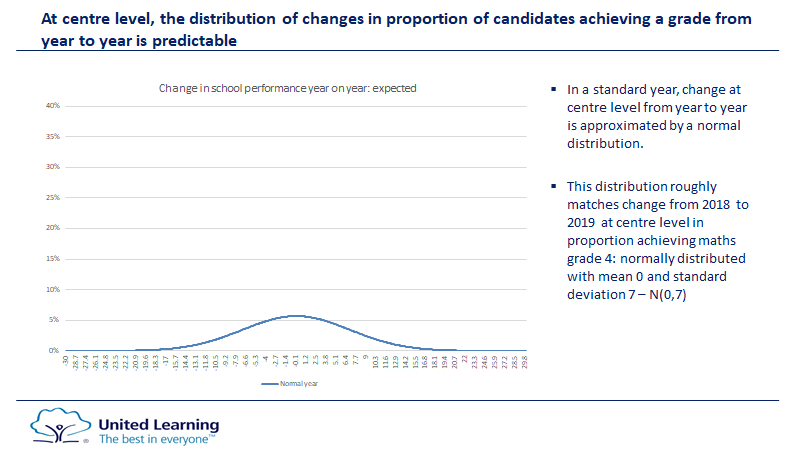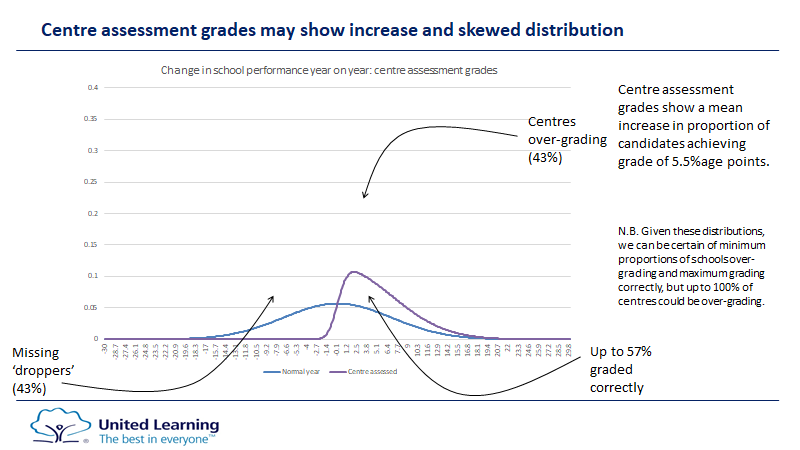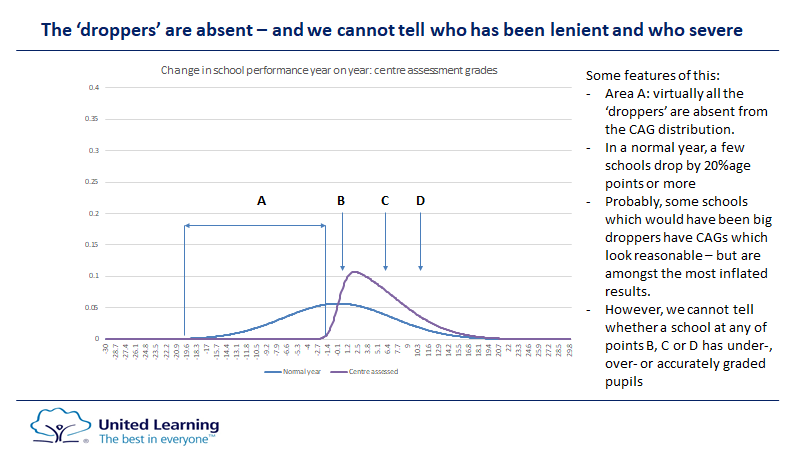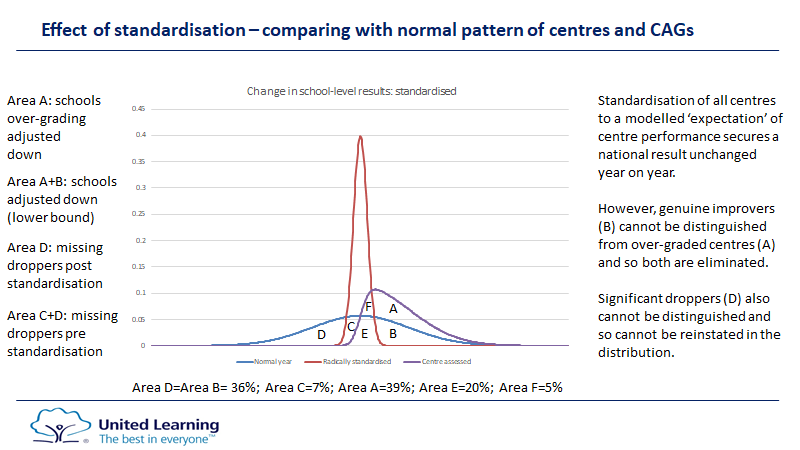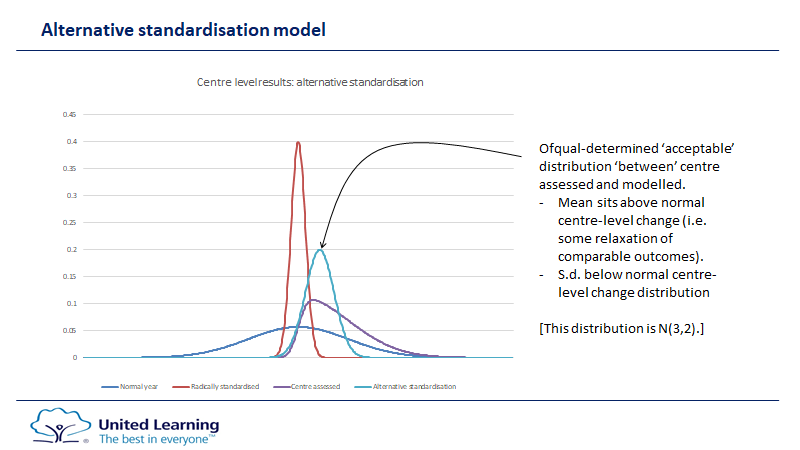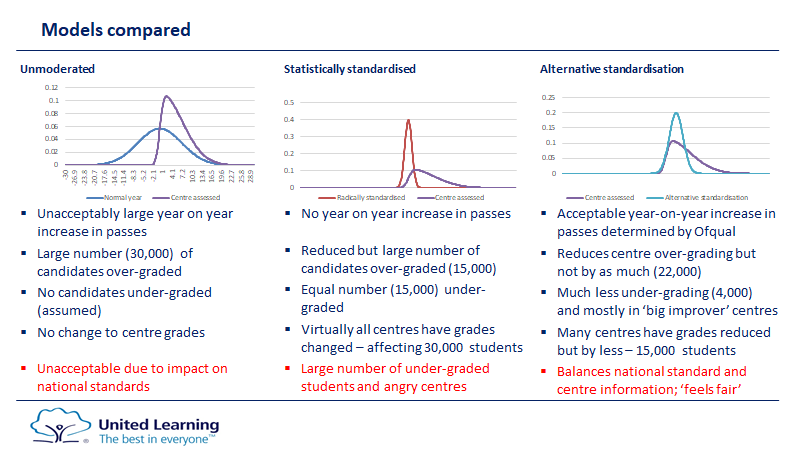1. I& #39;ve been asked about alternative approaches to exam grading... Firstly, all the principles of this were set out in the attached consultation response in April, so this is not & #39;wise after the event& #39;. It begins by acknowledging the difficulty of the task https://unitedlearning.org.uk/Portals/0/UnitedThinking/Awarding%20grades%20at%20GCSE%20and%20A%20level.pdf?ver=2020-07-16-145142-660">https://unitedlearning.org.uk/Portals/0...
2. Two fundamental objections to the consultation proposals: a) CAGs should not be changed if there was no evidence to suggest that they are wrong; b) & #39;Maintaining standards over time& #39; needs to be balanced against the need to avoid prejudice to the individual.
3. This requires easing of comparable outcomes for one year. This is not & #39;grade inflation& #39;- it is not accepting a lower standard and claiming it to be the same. It is recognising that there is genuine uncertainty over who would and who wouldn& #39;t have met the standard.
4. We know from Ofqual research on marking consistency (attached) that large numbers of students are marginal each year. For students with close to 50:50 chance of making a grade, arbitrary to mark some up and some down without them sitting the paper. https://assets.publishing.service.gov.uk/government/uploads/system/uploads/attachment_data/file/759207/Marking_consistency_metrics_-_an_update_-_FINAL64492.pdf">https://assets.publishing.service.gov.uk/governmen...
5. Since the impact on the individual of missing grades can be significant, the desirability of avoiding excessive increases in grades nationally needs to be balanced against risk of prejudice to the individual. There is no perfect system - it is a satisficing task.
6. This makes the best available approach a matter of judgement and there is no virtue in pretending there is an ideal technical solution. I set out in May and in this thread the fundamental uncertainties in trying to predict centre-level results. https://twitter.com/JonColes01/status/1292787888401403912?s=20">https://twitter.com/JonColes0...
7. Equally, using CAGs is problematic. Graphs below from early May. First one models usual change from year to year in proportion getting grade 4+ GCSE maths. Second models possible distribution of centre-level CAGs (skew normal) - numbers illustrative only.
8. Features of this which have been borne out: very few centres say they would drop; we cannot know at any point in the distribution whether a centre has been accurate, severe or lenient - even if you predict a 20 point rise, that will be correct for some centres.
9. Is likely that some schools predicting unchanged results are among most inflated CAGs submitted- wd have been big droppers. Standardisation removes inflated risers but also genuine risers & doesn& #39;t re-instate droppers - so doesn& #39;t create consistent standard between centres
9. CAGs have 2 key problems: higher overall than normal year and inconsistent standard between schools. However: some increase is right (as above) and standardisation doesn& #39;t solve the 2nd problem. It is highly likely that CAGs contain some information (signal as well as noise).
10. How much signal they contain is testable empirically against national reference test - but highly unlikely that their inclusion in model doesn& #39;t improve it. So I proposed this alternative standardisation model (again heuristic example).
11. Ofqual wd determine appropriate national distribution for centre-level change. Mean wd reflect judgement about acceptable level of increase in overall grades. Variance (i.e. breadth of the distribution) wd reflect level of & #39;signal& #39; in CAGs.
12. Standardisation wd still be applied, but CAGs wd be used to allocate centres to national distribution . Models compared in the attached - numbers again purely illustrative and looking at one grade boundary in one GCSE.
13. This model would have required more work from Ofqual/ABs to identify and investigate outliers and where malpractice is identified, root it out. I am not wedded to the specific model - it is one of many. It doesn& #39;t on its own solve the & #39;rank order& #39; problem.
14. However, key points: CAGs are no doubt inconsistent between centres; but standardisation does not mean consistency between centres; combining the two likely to improve accuracy & this can be tested; relaxing national distribution is right to avoid arbitrary decisions.

 Read on Twitter
Read on Twitter